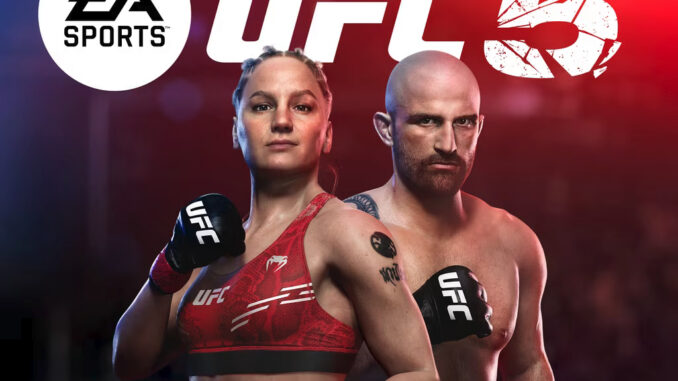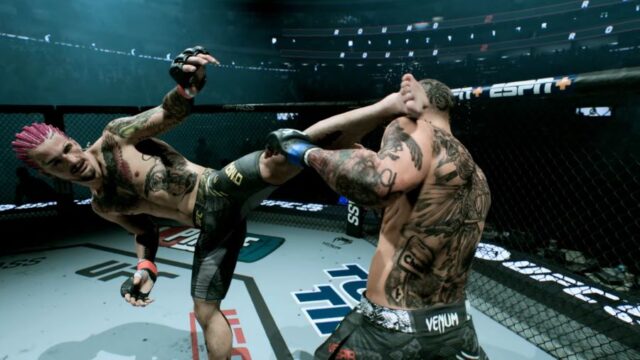
UFC 5 is both a brilliant game and a frustrating one. It flicks between both of these states, although your mileage is going to vary depending on your previous experience and your ability to scale the steep learning curve.
UFC 5 is much more of an iteration of the series than a big jump as has been seen in prior games. Fundamentally, things are the same. There’s a striking system, a grappling system and a clinch system which all return from UFC 4, albeit with tweaks. This is where things immediately start to get interesting.
Striking has had a reconfiguration of buttons, meaning broadly each face button corresponds to a limb. However, various combinations of shoulder and triggers are required at different points, as well as a new requirement for more frequent double button presses (such as X and A at the same time) meaning for previously easy-ish moves to do like spinning kicks, you are now required to be a whole lot more dextrous.
The other significant change is the removal of submission mini-games. Now, submissions chain and flow together, and you just need to decrease the submission bar of your opponent to get them to tap – and a requirement for this is the reading and countering of your opponent’s attacks and denying them. Directionally, this is simply as commands are reduced to one of two ways, but this is incredibly frustrating for longer fights whereas you always had a last-ditch chance with the mini-games. Now, get caught, and it’s over.
Doctor stoppages are one of the big new developments, with fighter damage looking incredibly brutal. The ref will pause the action and a doctor will assess what’s happening – this can make for more strategic matches, targeting certain areas for example, but also can make for frustration if you’re on the losing end of it.

Such is the fight game. At least there is a nice variety of options. Predictions for upcoming real UFC fights can reward points, and a Fight Contract mode as you relive or change history for prizes, with certain conditions at play. Sadly, Career Mode is almost identical to UFC 4, including the same training regime, the same character models and even the same posters on the walls in the gym. Real fighters make an appearance in cutscenes though, however, they look borderline horrific in most cases which is odd for a game that features such realistic-looking visuals. Frustratingly, not only are old assets reused, they are even stripped away at points. For example, UFC 4 would cycle between three or four different referees. Now, there is just the one. Odd.
Online you have the usual fare of ranked and quick fights, but Online Career lets you develop a fighter by increasing your experience of certain moves, and spending acquired points (up to a cap) to improve stats or buy new moves. This should prove an interesting one to watch as the meta develops.
Speaking of which, there are some tweaks needed as in most fighting games. A test for UFC 5 will be to see how much the developers listen to feedback, and what changes they make. I’m sure there will be some tweaks, but for now, it must be postponed after technical improvements. Online play is somehow quite laggy, or suffering with input lag at least. The frame rate overall isn’t as smooth as UFC 4, at least on Series X (UFC 4 benefited from the Xbox FPS boost initiative).
There’s some work to do but UFC 5 has the foundations of a great game. It just misses some of its punches at the moment, which is curious given the excellent pedigree of previous games.
Reviewed on Xbox Series X

